As an Amazon Associate I earn from qualifying purchases.
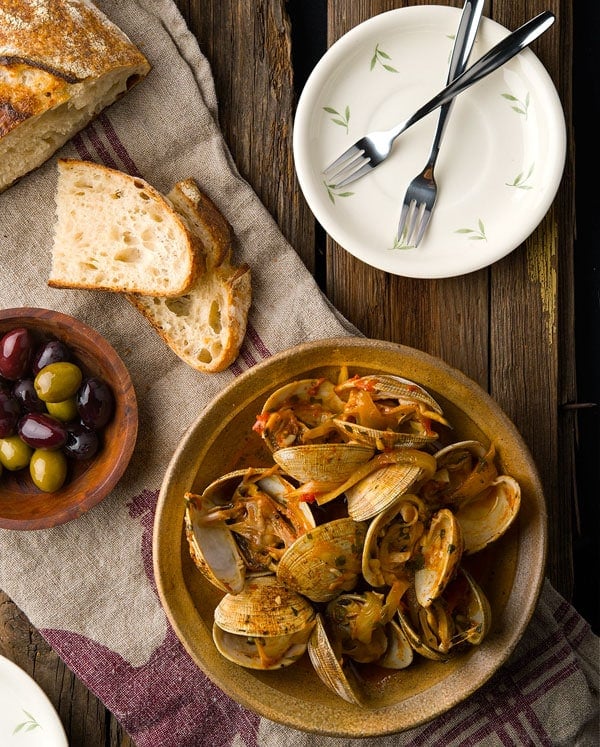
Clams, tomato and chiles are a classic combination for a reason. Everything here works super well, and, when you eat spicy clams with bread in one hand and a fork in another, makes a memorable lunch, light supper or appetizer.
I am indebted to the late Penelope Casas for this recipe, a version of which is in her book The Foods and Wines of Spain. This is traditionally served as a tapa, or small plate, although Holly and I ate it as our main course the other night.
Normally I like to talk about keys to success with a recipe, but this one is so easy it’s hard to mess up. Only tip I can offer is to watch the clams, and if you want them to be as tender as they can be, pluck each one from the simmering broth as it opens — there’s always one or two clams that are stubborn, and waiting for them all to open can overcook the first to submit. Cockles are notorious for this.
As an alternative way to serve your spicy clams, you can steam open all the clams, remove them from their shells, and use everything as a sauce for pasta or rice, or serve it over polenta.
I used Tabasco’s habanero hot sauce here, but any hot sauce will do. And you want a hot sauce because the vinegar in it balances all the flavors. Of course, you could use chiles and vinegar, too. Cayenne and sherry vinegar would be a good choice if you go that route.
Spanish Spicy Clams
Ingredients
- 3 to 4 tablespoons olive oil
- 1 medium onion, sliced root to tip
- 4 garlic cloves, sliced thin
- 1 tablespoon tomato paste
- 2/3 cup white or rosé wine
- 30 to 40 small hardshell clams
- 4 to 6 canned whole tomatoes, crushed by hand
- 1/4 cup chopped parsley
- Hot sauce to taste
Instructions
- Heat the olive oil in a large pan that has a lid. Cook the onions over medium heat until they soften; don't brown them. Add the garlic and cook for another minute or two.
- Stir in the tomato paste and cook this for a minute or so, then stir in the wine. Add the clams and crush the canned tomatoes over them. Cover the pan and turn the heat to medium-high. Let the clams steam in this broth until they all open. Discard any that stay closed.
- Uncover the pan and add the parsley, then the hot sauce. Swirl to combine and serve at once.
Nutrition
Nutrition information is automatically calculated, so should only be used as an approximation.
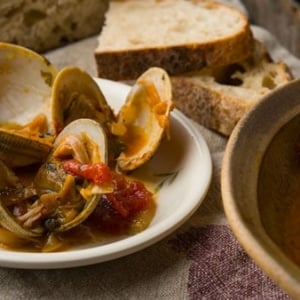
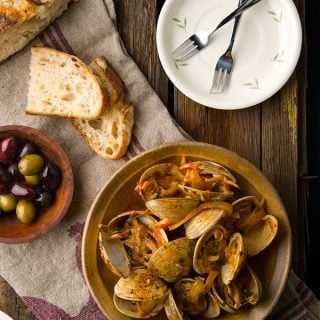
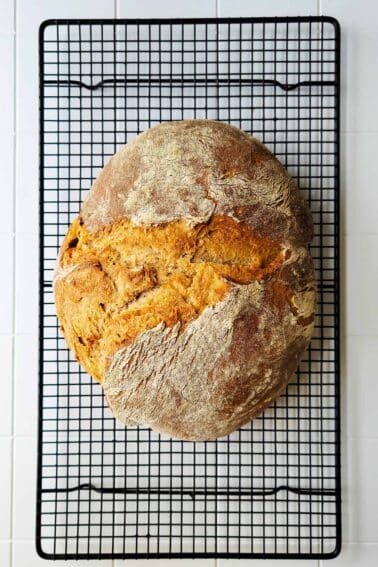
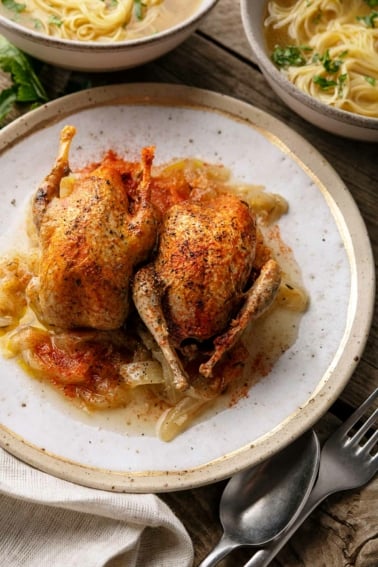

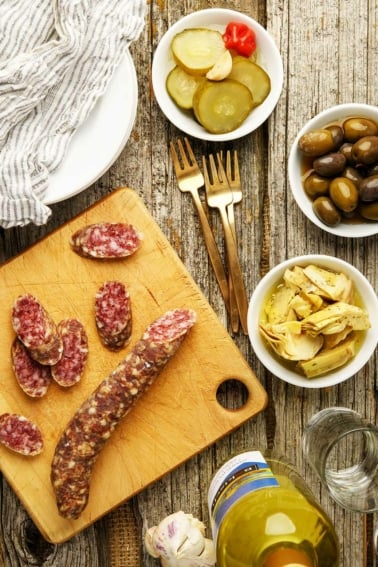
It’s like you’re on our vacation with us! Just found your site while looking up wild sweet peas on Texada island BC. We’re surrounded by blackberries and little neck clams so are going to try your recipes at our campsite today.
Would it be better to concassé your own tomatoes or is there a reasreason for using canned ones? Is it a flavour thing or textural? Looks delicious though.
Wine: You could concasse your own, sure, but good canned, peeled ones are almost as good — and a lot easier.